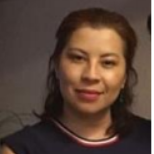International Journal of Modern Education and Computer Science (IJMECS)
IJMECS Vol. 15, No. 4, 8 Aug. 2023
Cover page and Table of Contents: PDF (size: 832KB)
Extended Reality Model for Accessibility in Learning for Deaf and Hearing Students (Programming Logic Case)
Full Text (PDF, 832KB), PP.1-17
Views: 0 Downloads: 0
Author(s)
Index Terms
Model, Extended Reality, Accessibility, Gamification, Immersive educational environment
Abstract
A group of researchers and developers from Colombia and Mexico have recognised that the development of state-of-the-art Extended Reality software, a key technology for the Metaverse, has great potential to improve teaching-learning processes in educational institutions. However, the development process does not take into account accessibility, universal design and inclusion, especially for the deaf student community. An extended reality model is proposed for the creation of this type of software as a tool to support access to knowledge, based on information gathering, requirements analysis, user-centred design and video game programming, including the ludic and didactic. The aim is to minimise the barriers that limit the learning of programming logic by students with hearing disabilities through the use of new technologies, creating spaces in virtual worlds that are understandable, usable and practical in conditions of safety, comfort and as much autonomy as possible. To validate the model, a mixed reality software prototype was designed and programmed to train students in programming logic, both deaf and hearing. User and heuristic tests were carried out, showing how immersion can improve knowledge acquisition processes and develop skills in higher education students.
Cite This Paper
Martha Segura, Ramiro Osorio, Adriana Zavala, "Extended Reality Model for Accessibility in Learning for Deaf and Hearing Students (Programming Logic Case)", International Journal of Modern Education and Computer Science(IJMECS), Vol.15, No.4, pp. 1-17, 2023. DOI:10.5815/ijmecs.2023.04.01
Reference
[1]M. Y. Segura Ruiz, R. Osorio Díaz, A. Závala Martínez and C. A. Rodríguez Sánchez, “Estudio para la creación de un modelo de realidad extendida hacia el aprendizaje inclusivo (Study for the Creation of an Extended Reality Model for Inclusive Learning)”, Pistas Educativas, Vol. 44, No. 143, pp. 80-95, 2022.
[2]Y. Sánchez Lozano, E. S. Buitrago Barreto, and M. Y. Segura Ruiz, "Desarrollo de un prototipo de realidad mixta como apoyo al proceso de aprendizaje de estudiantes con y sin discapacidad auditiva (Development of a mixed reality prototype to support the learning process of students with and without hearing disabilities),” in Ingeniería y Desarrollo en la Nueva Era, Ed. IAI: Medellin, Colombia, 2022, pp. 891–90.
[3]X. Guo, Y. Guo, and Y. Liu, “The development of extended reality in education: Inspiration from the research literature,” Sustain., Vol. 13, No. 24, pp. 13776, 2021.
[4]M. P. Ilić, D. Păun, N. P. Šević, A. Hadžić, and A. Jianu, “Needs and performance analysis for changes in higher education and implementation of artificial intelligence, machine learning, and extended reality,” Educ. Sci., Vol. 11, No. 10, pp. 568, 2021.
[5]C. Estebala del Prado, "Realidad aumentada: hacia una realidad extendida (Augmented reality: towards an extended reality)", Education and Digital Future, Vol. 17, p. 175-180, 2018.
[6]Y. Cho, and K. Shin Park. “Designing Immersive Virtual Reality Simulation for Environmental Science Education”, Electronics, Vol. 12, No. 2, pp. 315, 2023.
[7]K. Jahn, F. M. Oschinsky, B. Kordyaka, A. Machulska, T.J. Eiler, A. Gruenewald, and B. Niehaves, “Design elements in immersive virtual reality: the impact of object presence on health-related outcomes”, Internet Research, Vol. 32, No. 7, pp. 376-401, 2022.
[8]R. Serrano-Vergel, P. Morillo, S. Casas-Yrurzum, and C. Cruz-Neira, “Exploring the Suitability of Using Virtual Reality and Augmented Reality for Anatomy Training”, IEEE Transactions on Human-Machine Systems, pp. 1–12, Jan. 2023.
[9]M. Vergel Ortega, O. Rincón and C. Cardona. “Comunidades de aprendizaje y prácticas pedagógicas (Learning communities and pedagogical practices)”, Boletín Redipe, Vol. 5, No. 9, pp. 137-145, 2016.
[10]G. Gómez García, C. Rodríguez Jiménez, and J. A. Marín Marín, “La trascendencia de la Realidad Aumentada en la motivación estudiantil. Una revisión sistemática y meta-análisis (The importance of Augmented Reality in student motivation. A systematic review and meta-analysis)”. ALTERITY Revista de Educación, Vol 15, No. 1, pp. 36-46, 2020. [online]. Available: https://doi.org/10.17163/alt.v15n1.2020.03
[11]M. S. W. Boysen, M. C. Sørensen, H. Jensen, J. Von Seelen, and H. M. Skovbjerg, “Playful learning designs in teacher education and early childhood teacher education: A scoping review,” Teach. Teach. Educ., Vol. 120, pp. 103884, 2022.
[12]E. M. Murtagh, J. Sawalma, and R. Martin, “Playful maths! The influence of play-based learning on academic performance of Palestinian primary school children,” Educ. Res. Policy Pract., Vol. 21, No. 3, pp. 407–426, 2022.
[13]García-Quismondo, M. Á. M., and Cruz-Palacios, E. “Gaming como Instrumento Educativo para una Educación en Competencias Digitales desde los Academic Skills Centres (Gaming as an Educational Instrument for Education in Digital Competences from Academic Skills Centres)”, Revista General de Información y Documentación, Vol. 28, pp. 489–506, 2018. [online]. Available: https://doi.org/10.5209/RGID.62836
[14]A. M. Almelhi, “Effectiveness of the ADDIE Model within an E-Learning Environment in Developing Creative Writing in EFL Students,” English Lang. Teach., Vol. 14, No. 2, pp. 20, 2021.
[15]N. Dozio et al., “A design methodology for affective Virtual Reality,” Int. J. Hum. Comput. Stud., Vol. 162, pp. 102791, 2022.
[16]V. De Luca et al., “Virtual Reality and Spatial Augmented Reality for Social Inclusion: The ‘Includiamoci’ Project,” Inf., Vol. 14, No. 1, pp. 38, 2023.
[17]N. Kumarasamy, V. Arumugam, P. Sinnappan, and M. R. Ismail, “Factors Affecting the Students’ Actual Use Behaviour of Virtual Learning Environments (VLEs) during the Movement Control Order (MCO),” Int. J. Mod. Educ. Comput. Sci., Vol. 15, No. 3, pp. 1–15, 2023.
[18]P. Smart, “Minds in the Metaverse: Extended Cognition Meets Mixed Reality,” Philos. Technol., Vol. 35, No. 4, pp. 1–29, 2022.
[19]E. Del Pezo Izaguirre, M. J. Abásolo, and C. A. Collazos, “Mobile Technology and Extended Reality for Deaf People: A systematic review of the open access literature,” 2020 XV Conferencia Latinoamericana de Tecnologías de Aprendizaje (LACLO), IEEE, Loja, Ecuador, 2020, pp. 1-8.
[20]E. Del Pezo Izaguirre, M. J. Abásolo, and C. A. Collazos, “Educational Methodologies for Hearing Impaired Children Supported by Mobile Technology and Extended Reality: Systematic Analysis of Literature", IEEE Revista Iberoamericana de Tecnologías del Aprendizaje., Vol. 16, No. 4, 2021, pp. 410–418.
[21]I. Sommerville, Ingeniería de Software, Mexico: Pearson Education, 2011.
[22]R. S. Pressman, Ingeniería del software Un enfoque práctico, México: McGraw Hill, 2010.
[23]R. S. Contreras Espinosa, J. L. Eguia Gomez, and L. Solano Albajes, “Videojuegos como un entorno de aprendizaje (Videogames as a learning environment),” ICONO 14, Vol. 2, No. 9, pp. 249-261, 2011.


